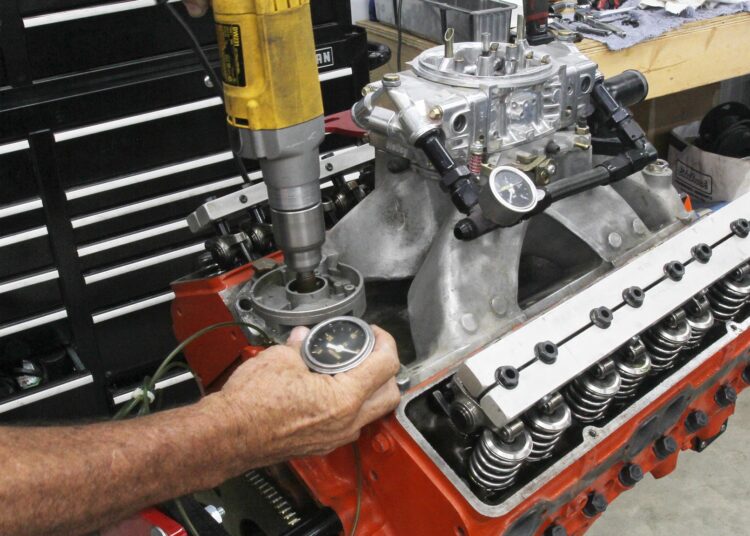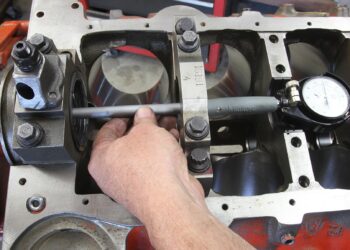image from: www.hotrod.com
Whether you’re an aspiring engineer, an electric motor enthusiast, or a dedicated DIY hobbyist, designing your own motor is both a challenging and rewarding pursuit. But no matter how innovative your ideas are, success starts with having the right tools.
This guide outlines the best tools for DIY motor design—including electrical, mechanical, and digital equipment—to help you design, prototype, and build with confidence and precision.
🔧 Why Tool Choice Matters in DIY Motor Design
Every detail in motor construction—coil winding, housing alignment, shaft machining—demands accuracy, safety, and efficiency. In DIY projects, the quality of your tools directly impacts:
-
Motor performance & lifespan
-
Electrical safety
-
Build accuracy and symmetry
-
Overall cost and productivity
Using professional-grade or thoughtfully chosen DIY tools also helps prevent costly mistakes and allows for creative freedom in prototyping and iteration.
🛠️ Best Tools for DIY Motor Design Projects
Here’s a categorized breakdown of the essential tools every hobbyist should consider:
1. Digital Multimeter
Function: Measure voltage, resistance, and current.
Why It’s Essential: Ensures correct connections and prevents electrical faults.
2. Coil Winder (Manual or Electric)
Function: Helps evenly wind copper wire for stators and rotors.
Benefit: Boosts motor efficiency with consistent windings.
3. 3D CAD Software (e.g., Fusion 360, FreeCAD)
Function: Design motor components with precise dimensions.
Why It’s Powerful: Enables visualization and simulation before physical prototyping.
4. Soldering Iron with Temperature Control
Use: For clean, secure connections on PCBs, terminals, and wires.
Why It Matters: Reliable joints reduce electrical losses and shorts.
5. Lathe Machine or Mini Lathe
Function: Machine custom shafts, spacers, or housings.
DIY Advantage: Enables precision fitting and rotating parts manufacturing.
6. Bench Drill Press
Use: Create accurate holes for mounting, wiring, or assembly.
Importance: Essential for alignment and secure placement of components.
7. Oscilloscope (Optional, Advanced)
Use: Visualize motor waveforms and performance.
Why: Helps in tuning controllers and identifying signal inconsistencies.
8. Rotary Tool (e.g., Dremel)
Function: Grinding, cutting, shaping, and polishing.
Why It’s Useful: Ideal for small adjustments and housing modifications.
9. Caliper (Digital or Analog)
Use: For ultra-precise measurement of shaft diameter, casing tolerances, etc.
DIY Benefit: Prevents fitting errors and material waste.
10. Heat Gun
Use: Shrink tubing, heat soldering, or modify plastic housings.
Why: Improves insulation and safety in compact designs.
🧰 Bonus: Safety & Support Tools
-
Protective Gear – Gloves, goggles, and antistatic wristbands
-
Workbench with Vise – Stabilizes workpieces
-
Tool Storage System – Keeps components organized
-
Magnifying Lamp – Perfect for wiring and PCB work
🧑🏫 Pro Tips for Beginners
-
Start with basic builds (like DC brushed motors) before moving to brushless or coreless designs.
-
Practice on scrap materials to build machining confidence.
-
Document your builds using journals or CAD notes for future reference.
-
Use simulation software to test electromagnetic fields before assembly.
🌐 Where to Buy DIY Motor Design Tools
Looking for affordable and reliable tools? Here are top platforms trusted by hobbyists worldwide:
| Platform | Specialization | Notes |
|---|---|---|
| Amazon | Electronics, hand tools | Fast shipping & reviews |
| AliExpress | Affordable parts & accessories | Great for bulk buys |
| SparkFun | Sensors, PCBs, Arduino components | Ideal for electronics DIY |
| Harbor Freight | Budget mechanical tools | Physical locations available |
| Banggood | Mini machines, testers, gadgets | Diverse product categories |
⚙️ Final Thoughts: Invest in Precision, Build with Passion
Mastering DIY motor design starts with mastering your tools. The right gear not only streamlines your workflow but also elevates your engineering outcomes. With these tools in hand, you’re ready to prototype your next electric motor—efficiently, safely, and with pro-level results.
Whether you’re building for robotics, e-bikes, automation, or simply for passion, the right setup transforms your garage into a personal innovation lab.











